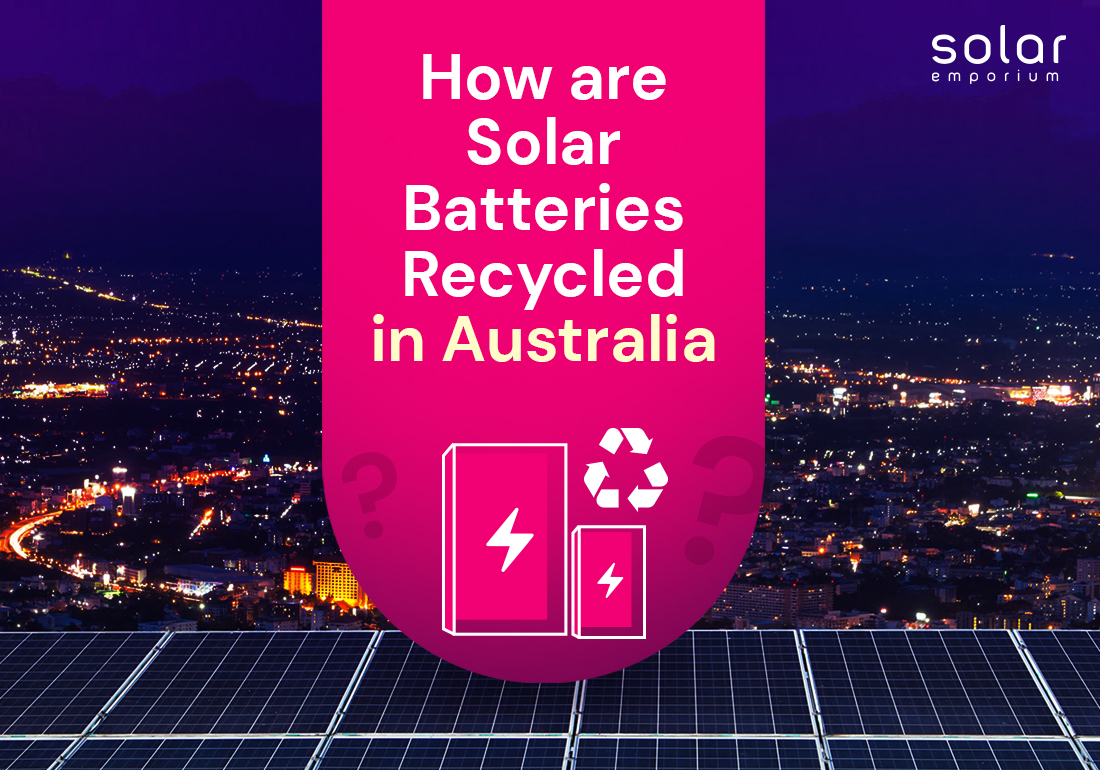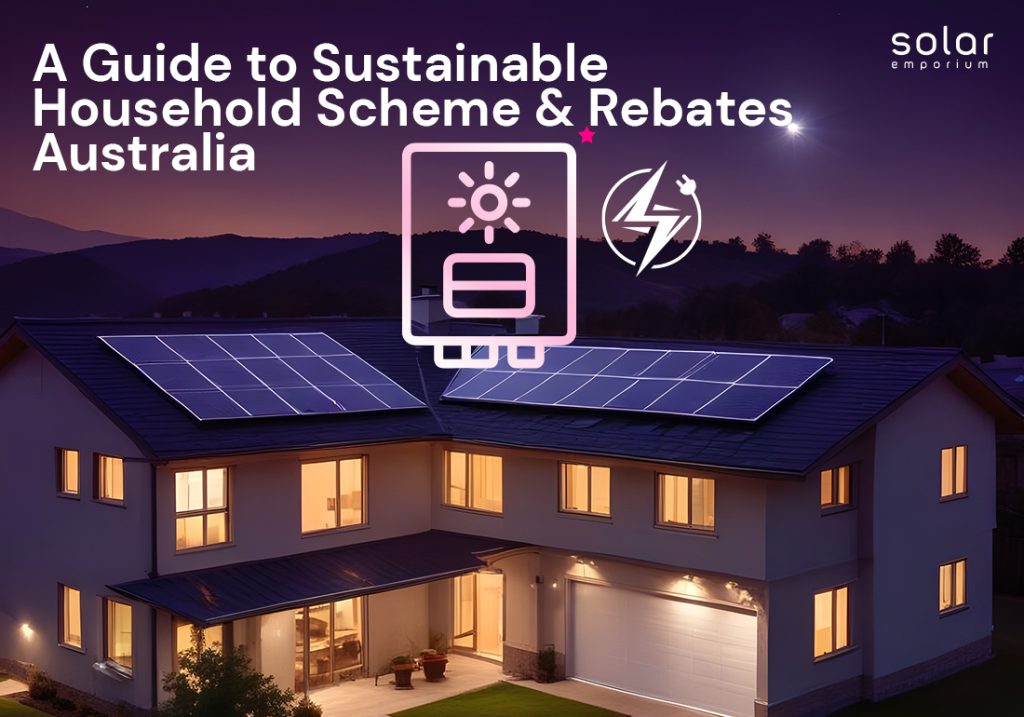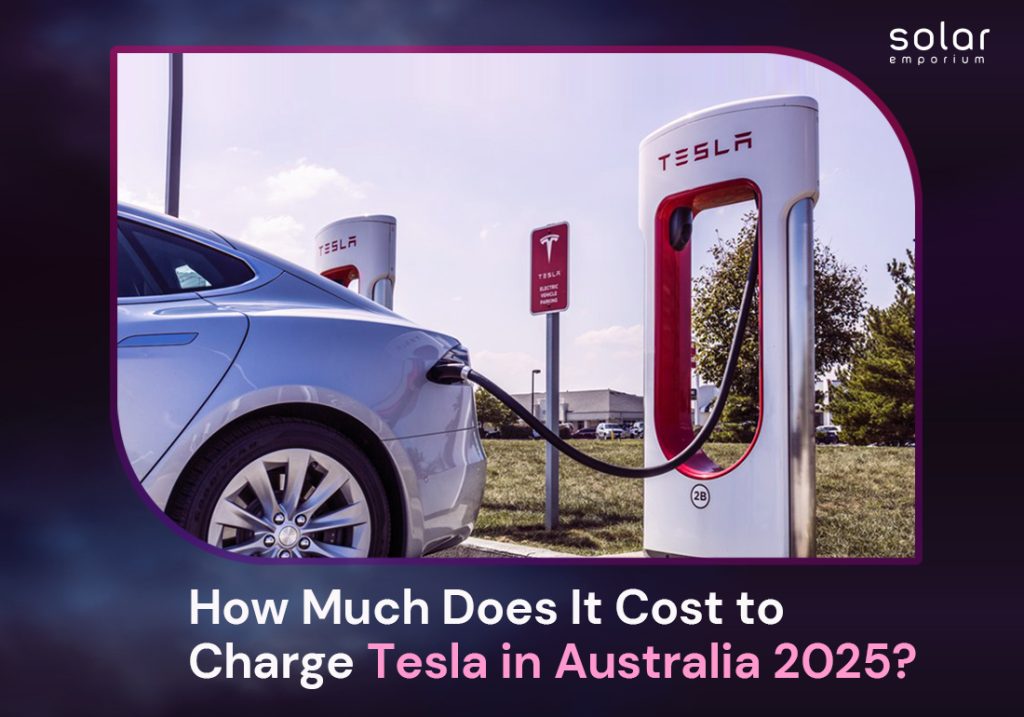In Australia, where sustainability has become a growing concern, most households nowadays rely heavily on solar power to fulfill their energy needs.
However, as more homes and businesses embrace this clean energy, the world has now started to face a new challenge: what happens to solar batteries as they reach the end of their lifecycle?
Thinking of dumping the expired batteries anywhere? Wait! The best option could be recycling it.
Through recycling solar batteries, we can recover valuable materials and reuse them. It also helps reduce environmental impact, contributing more to a green future.
So, let’s dive into innovative recycling methods and explore how are solar batteries recycled in Australia.
Recycling Solar Batteries: Is It Possible and Why It Matters?
One question that often puts people in a dilemma is, can we give solar batteries a second life?
Well, the answer is yes, we can! In fact, recycling solar batteries is one of the increasing concerns for people around the world. Using this process of recycling solar batteries, we can maximize the energy sector’s sustainability and reduce waste to avoid environmental consequences.
It also decreases the demand for new materials while creating economic viability. Recycling industries reduce the cost of energy storage solutions for consumers, encouraging them to adopt more eco-friendly practices.
Why Recycling of Solar Batteries Matter?
When you are aiming to create a sustainable future any kind of recycling is a crucial part of the strategy. Similarly, recycling solar batteries helps us support the growth of renewable energy technologies and mitigate their worldwide environmental impact.
Resources needed for solar battery production are not always available in bulk and require lots of energy and effort to collect.
So, Australian recycling plants can easily utilize the waste effectively and convert it into valuable resources. This solid waste can be further used as the raw material for any new product to reduce the initial manufacturing cost.
Overall, recycling solar batteries can ensure environmental protection, resource conservation, economic benefits, energy efficiency, and, last but not least, long-term sustainability.
Signs It's Time to Replace Solar Batteries
Incorporating a healthy battery storage system with your solar panel can take your solar journey to a new height and give you a sense of relief. But in a world where nothing lasts forever, batteries, too, experience degradation over time.
Even though batteries vary in their building mechanism, each has common signs that indicate it needs to be replaced for proper functioning.
Identifying when to replace your solar batteries can play a significant role in maintaining an efficient and reliable solar energy system.
So, here we’ve listed several key things that indicate your battery needs replacement soon:
- The storage capacity of your battery is decreasing significantly and holds less charge than before.
- There is a visible damage sign, such as scratches, swelling, or any kind of leak or corrosion.
- The battery is taking more time to get fully charged than usual.
- Batteries that are no longer efficiently converting stored energy into usable power.
- Displaying frequent alert messages and notifications about the battery’s health status.
The Solar Battery types and Lifespan
Before replacing your solar batteries, make sure you have some basic ideas about their types, longevity, and warranty provided by the manufacturers.
In general, solar batteries have a lifespan that ranges between 5–25 years. It might vary depending on the battery types and maintenance practices.
Thus, evaluating the cost, benefits, and lifespan can reduce expenses and lead to a more informed decision.
So, here are battery types that dominate the solar world due to their balanced performance, efficiency, and evolving technology:
Lead-Acid Batteries
Lead-acid batteries are usually the most affordable and common type of battery in solar-powered systems. They offer stable performance and are highly durable in extreme temperatures.
These types of batteries can be easily sourced and installed with both indoor and outdoor solar panel systems. It offers 80-85% efficiency and their lifespan ranges between 5 to 7 years.
Besides these, the best feature of Lead Acid batteries is they are environmentally friendly and easy to recycle.
Lithium-Ion Batteries
Lithium-Ion batteries are an outstanding choice for residential or commercial settings because of their safety profile and prolonged lifespan (10 to 15 years).
Despite having relatively higher upfront costs, their excellent energy efficiency and energy storage quality make them top-notch in the realm of solar batteries.
Lithium-ion batteries are lightweight, compact, and mostly utilized by solar battery installation systems in Australia. But the only issue is it’s pretty difficult to recycle.
Also, according to various surveys, only 5% of Lithium-ion batteries are recycled in total.
Nickel-Cadmium Batteries
Nickel Cadmium batteries are robust and can work efficiently in high temperatures. They have a high percentage of energy density and depth of discharge which make them a popular choice for industrial settings.
NiCd batteries also require minimal maintenance and offer reliable performance for 10 to 15 years. They can be recycled or reprocessed, and over 95% of Nickel-Cadmium batteries are recyclable.
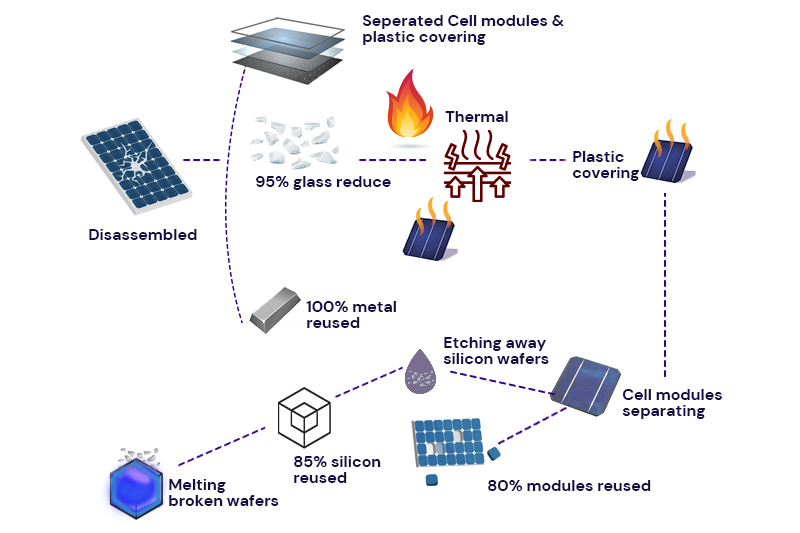
Understanding the Recycling Journey of Solar Batteries
In a nutshell, traditional batteries and solar batteries have a lot in common. They share several similar elements which also makes their recycling process pretty similar.
However, recycling solar batteries requires special considerations to avoid potential hazards like explosions and firing. Some batteries come in larger modules that include toxic chemicals, integrated circuits, and complex materials.
So, it is better to consult with a certified solar expert or take the batteries to a nearby recycling station to avoid any mishap or environmental impact.
Curious to know the steps for safe and efficient recycling?
Here’s a detailed breakdown of the steps to follow the recycling of solar batteries:
Collection and Transportation:
When the solar panels reach the end of life, they are gathered from the specified collection points and taken to the recycling plants. The transportation should be done safely to prevent any leakage or breakdowns.
Preprocessing and Sorting:
At the recycling plants, the batteries are sorted out based on their types and sizes which are then labeled according to their required recycling methods.
Disassembling the Battery:
This stage involves proper cleaning and disassembling of the valuable battery components such as casing, individual battery cells, terminals, etc. It also separates and discards any non-recyclable components.
Crushing and Shredding:
After all the preliminary steps, the battery components are ready to be crushed and shredded into small pieces. Materials like silicon, glass, and metals are then separated using an advanced magnetic machine or air classification.
Chemical Leaching:
This step is essential for extracting metals like lithium, cobalt, or nickel using hydrometallurgical processes. It includes acids and solvents. The recyclable materials then undergo intense purification to remove impurities.
Production of Recycled Materials:
Finally, after ensuring that the valuable recycled materials meet industry standards, they are transported to specific factories. Then, the materials are reused effectively in new batteries and other products.
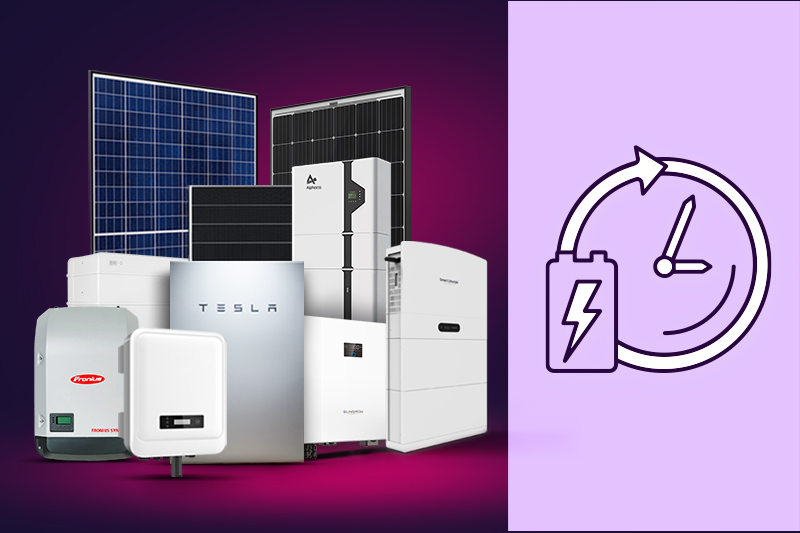
Best Recycling Process of Solar Batteries According to Types
Lithium-Ion Battery Recycling
Lithium-ion batteries are undoubtedly a popular name in the solar world. They are long-lasting, efficient, and compact which makes them more appealing to most Australian households.
However, Lithium-Ion batteries have a complex battery chemistry, and recycling them needs to be performed stepwise with care and caution.
Lithium-ion recycling involves sorting, extracting, shredding, and purification of the individual battery components before reuse. Besides, safe recycling can conserve valuable and critical materials, leading to a more sustainable approach than disposal.
These are the important recycling steps for Lithium-ion batteries:
- At first, the batteries are collected and carefully transported to their designated recycling plant.
- They are sorted and classified according to their size, raw materials, and specific recycling process guided by the manufacturer.
- To avoid any firing, explosion, or chemical spilling the batteries are then completely discharged.
- After discharging, it undergoes shredding which creates several different materials, like copper and aluminum foils, a granular material called black mass, steel cans, plastic films, and electrolytes.
- They follow two methods to purify and extract the metals. One is a heat-based smelting process (pyrometallurgy) and the other one is a liquid-based leaching process (hydrometallurgy).
- The resulting material is then separated using advanced screening and magnetic separators. They are further dried in the oven to remove moisture.
- Those recovered materials are reused in new batteries or other industrial processes
Nickel-Cadmium Batteries Recycling
Nickel Cadmium batteries are an excellent option for solar as they can be recycled very efficiently. Their recycling process focuses on recovering nickel and other metals through methods similar to those of lithium-ion batteries.
However, it may also involve specific treatments to handle the different chemical components, such as vacuum distillation. In this process, the furnace is needed to separate metals according to their evaporation temperature.
Initially, the batteries undergo a pyrolysis treatment, removing plastics and other organic components.
Metals like iron and nickel are then melted in a tightly sealed and evacuated electric furnace. It has a quartz pipe where the batteries are gradually heated by induction process.
Then the metallic vapor is passed through a tube to a metal condenser at which point the metals turn into small liquid droplets and produce a metallic plate. The plates are then reprocessed into slabs for further use.
Lead-Acid Batteries Recycling
Lead-Acid Batteries Recycling
Lead-acid batteries are the most affordable option, and they also have a simple recycling process. Around 90-98% of batteries recycled in the world are mostly lead-acid.
So, let’s see how it works!
At the very beginning, these Lead acid battery casings are removed and then broken down into pieces using a hammer crusher. Then the crushed pieces are submerged into a water tank where the plastics float and lead and other heavy materials sink and accumulate at the bottom line of the tank.
From there each separated material like battery acid, metal, and plastic is collected and sent for different purposes.
For example, the neutralizing sulphuric acid produces sodium sulfate which is used in laundry detergents, glass production, and textile industries.
Similarly, the extracted lead can be used to manufacture new batteries and other products. Also, plastics are used for new battery cases and different plastic materials.
What to Do When Recycling Isn't an Option?
After knowing all the ABCs of recycling solar batteries, you might wonder, what if the solar battery recycling options are not available in your area? What should you do to ensure proper disposal of your solar batteries?
Well, there are numerous ways to properly dispose of your expired solar batteries. This includes manufacturer take-back programs, municipal collection programs, recycling associations, professional E-Waste disposal services and programs.
In Australia, most states arrange battery collection events and offer paid e-waste disposal. You can easily contact a local certified e-waste recycling company and ask if they have any pickup services or designated drop-off locations for safe solar battery disposal.
So, if recycling isn’t an option for any reason, you can determine the most suitable and appropriate methods to dispose of your solar batteries.
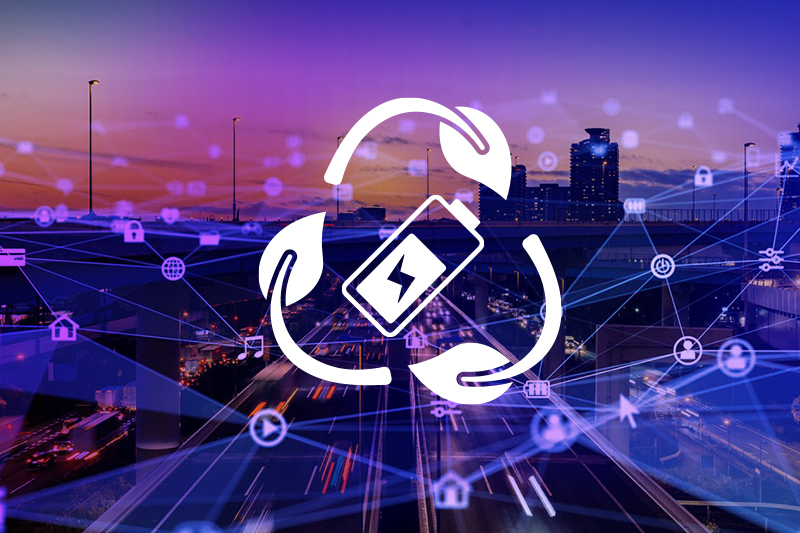
Environmental Benefits of Recycling Solar Batteries
Undoubtedly, the word recycle is deeply interrelated with the environment. Recycling helps to conserve resources, brings economic benefits, and lessens environmental impact while taking steps ahead toward a green, sustainable future.
Now let’s look at what benefits recycling solar batteries brings to the environment. Shall we?
- Recycling reduces energy consumption and lowers the greenhouse gas production that is associated with new battery production.
- Solar batteries contain toxic substances, such as lead, nickel, or cadmium which cannot be disposed of directly. Recycling can reduce environmental pollution and prevent harmful chemicals from contaminating the earth’s surface.
- Battery recycling helps conserve resources by reducing the need for new basic products. This reduces the ecological impacts associated with mining, such as habitat destruction and deforestation.
- Recycling supports a sustainable economy. Reusing and reprocessing the extracted materials after battery degradation significantly reduces the overall cost of sourcing the raw materials.
Future Trends and Advanced Recycling Technology of Solar Battery
Driven by technological advancements, solar battery, and solar panel recycling is evolving rapidly to achieve higher recovery rates and recycling efficiency.
These advancements promote environmental sustainability and ensure economic viability in many aspects.
Unlike traditional recycling, companies nowadays use enhanced nanotechnologies for recycling. One such process is Hydrometallurgical, which uses aqueous solutions. Another process called Pyrometallurgical involves continuous heating at high temperatures to purify and extract useful elements.
Recycling industries in Australia also use robots and AI for the automated sorting and dismantling of solar batteries. These robots are highly efficient and reduce labor-intensive work while increasing safety measures.
In addition, solar industries are making efforts to build a closed-loop recycling system and expand recycling infrastructure where materials are continuously reused to minimize waste.
It preserves valuable resources and discards the need for raw materials for new production.
For any of your solar-related queries, you can talk with our expert or visit Solar Emporium! Here, we offer the best reliable solar products to power your home!
